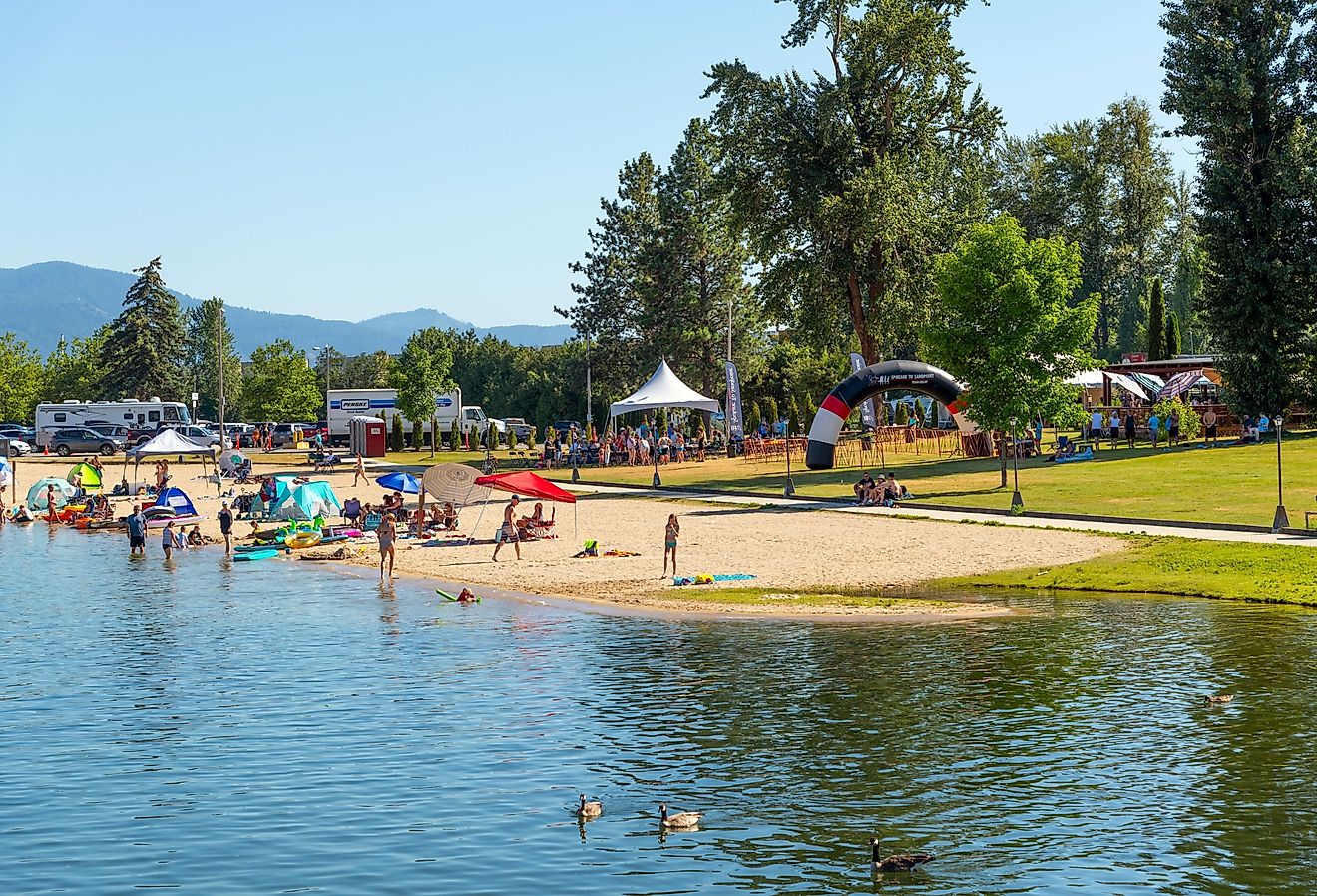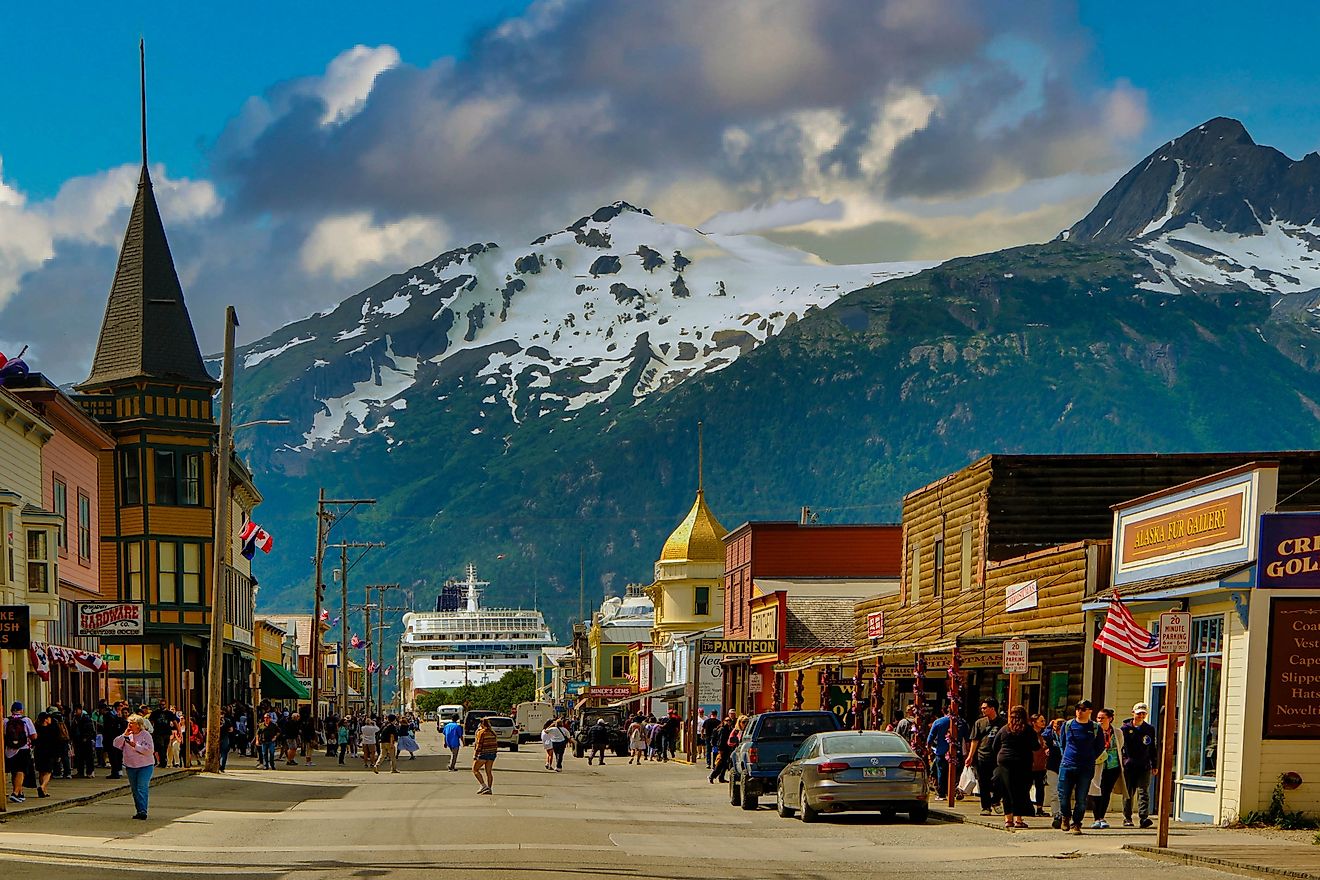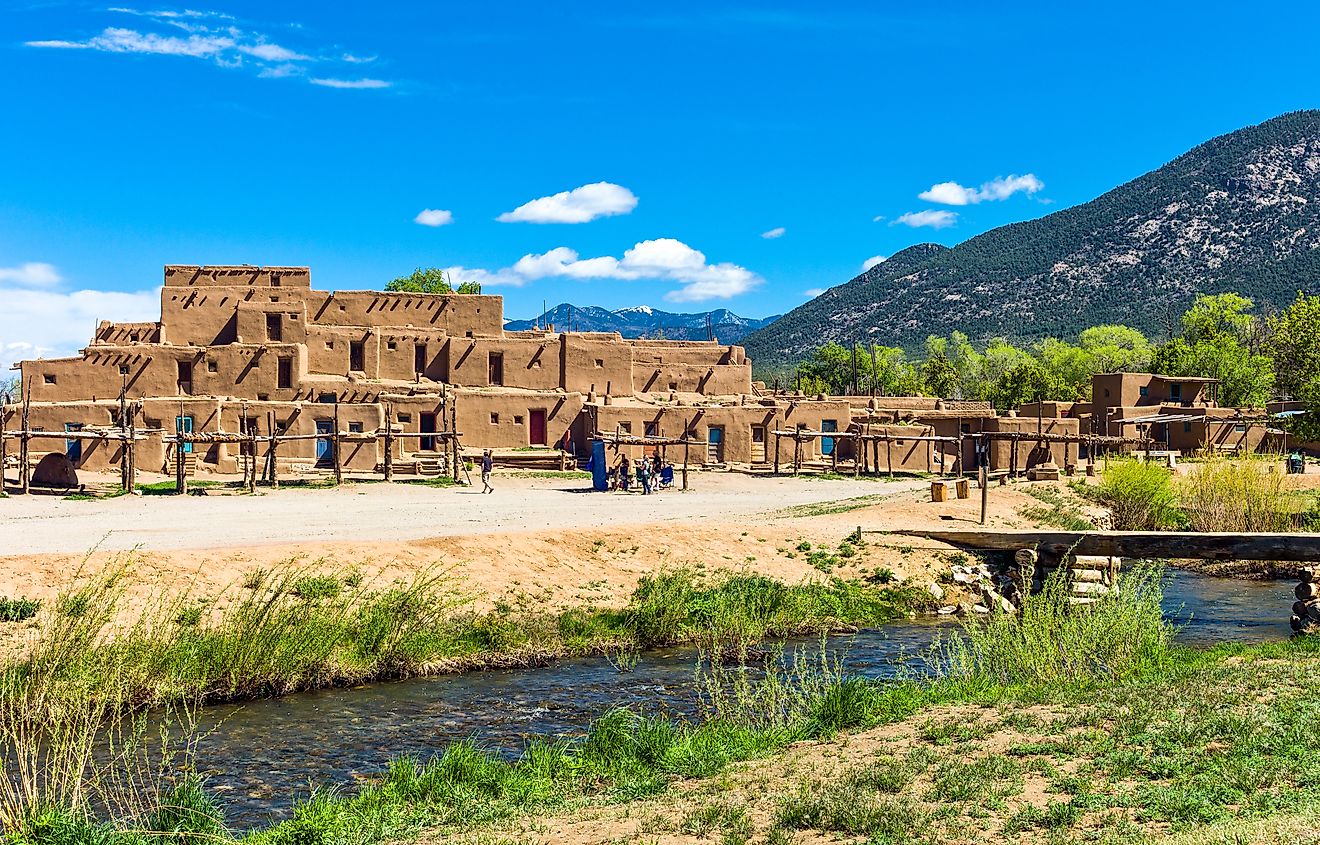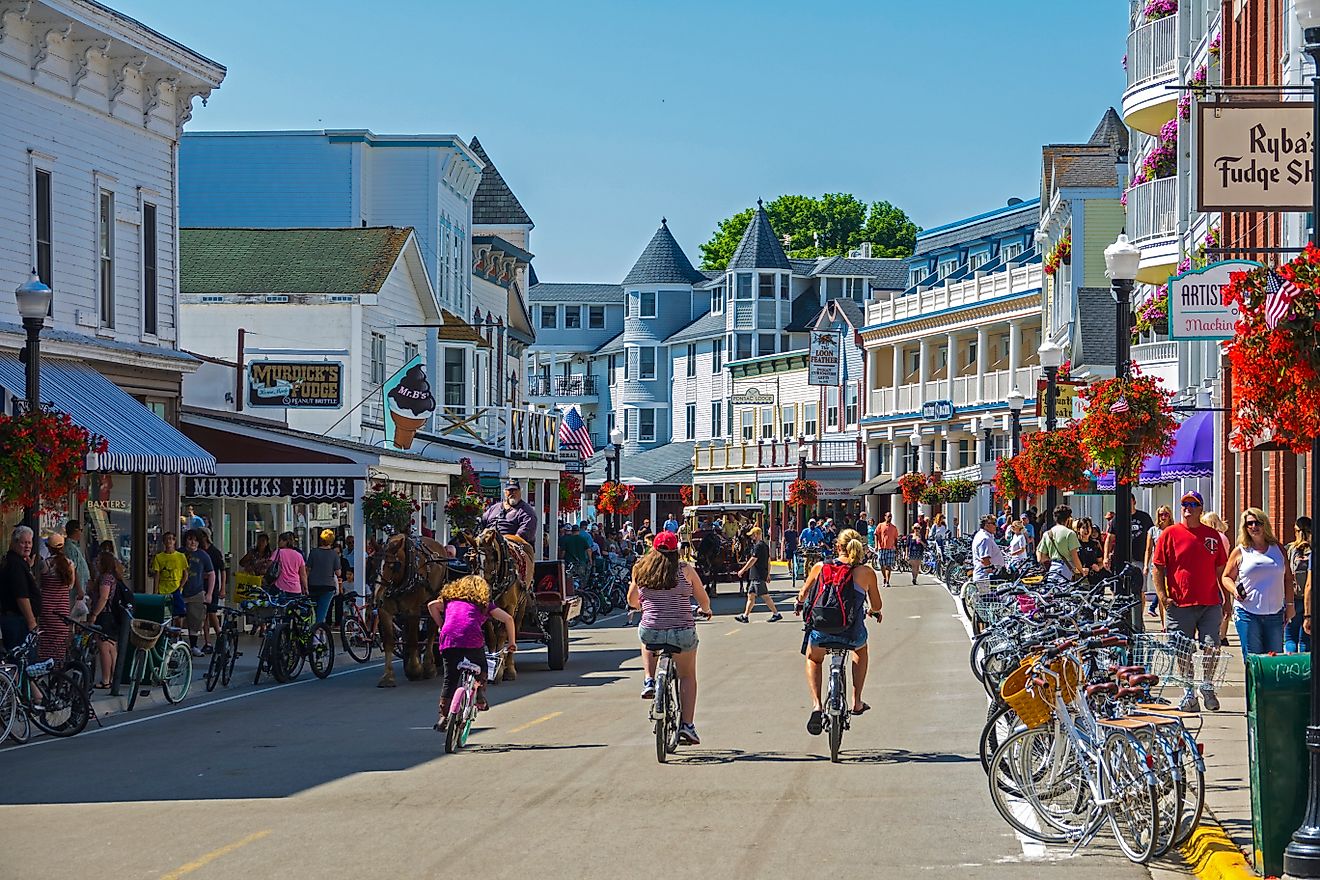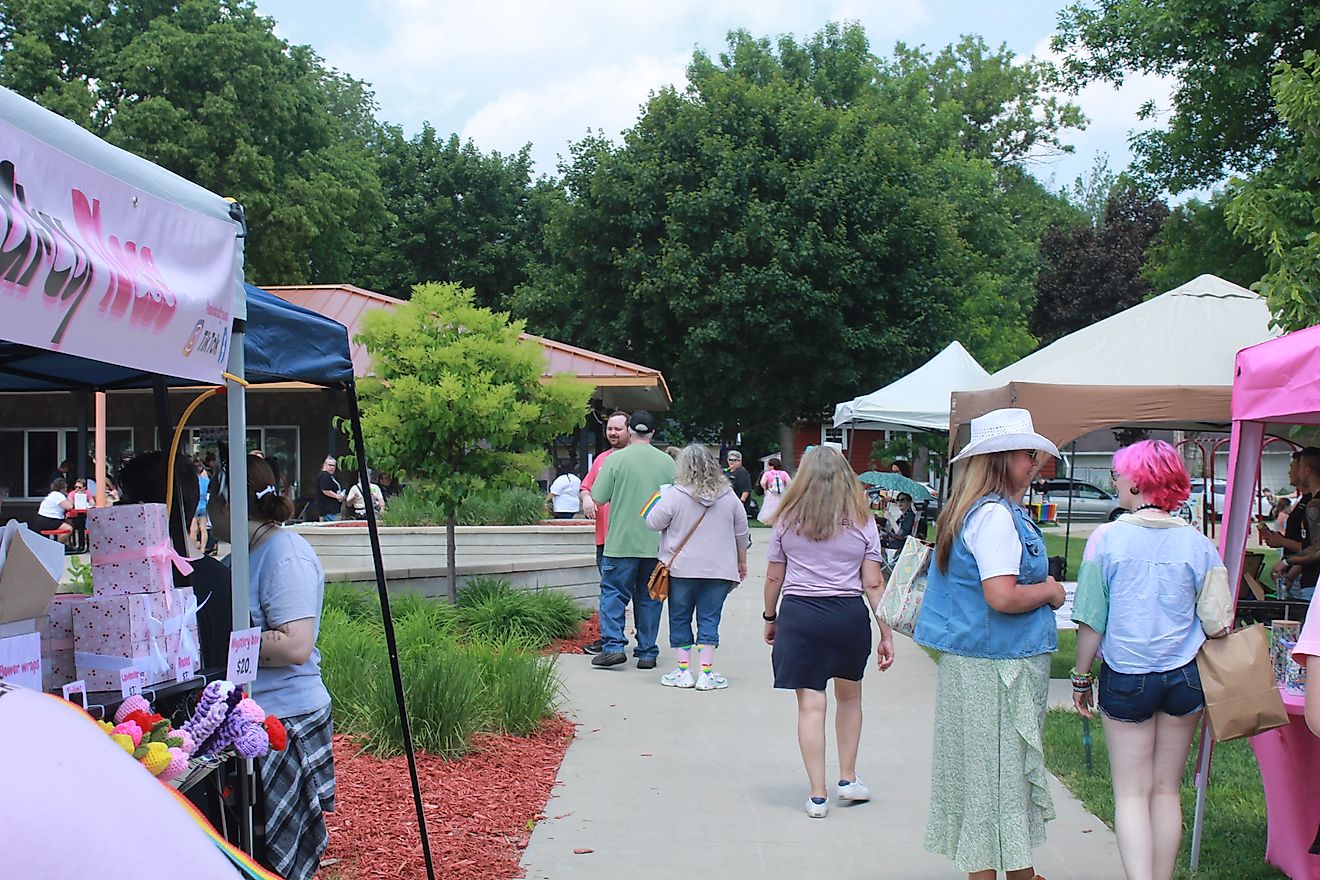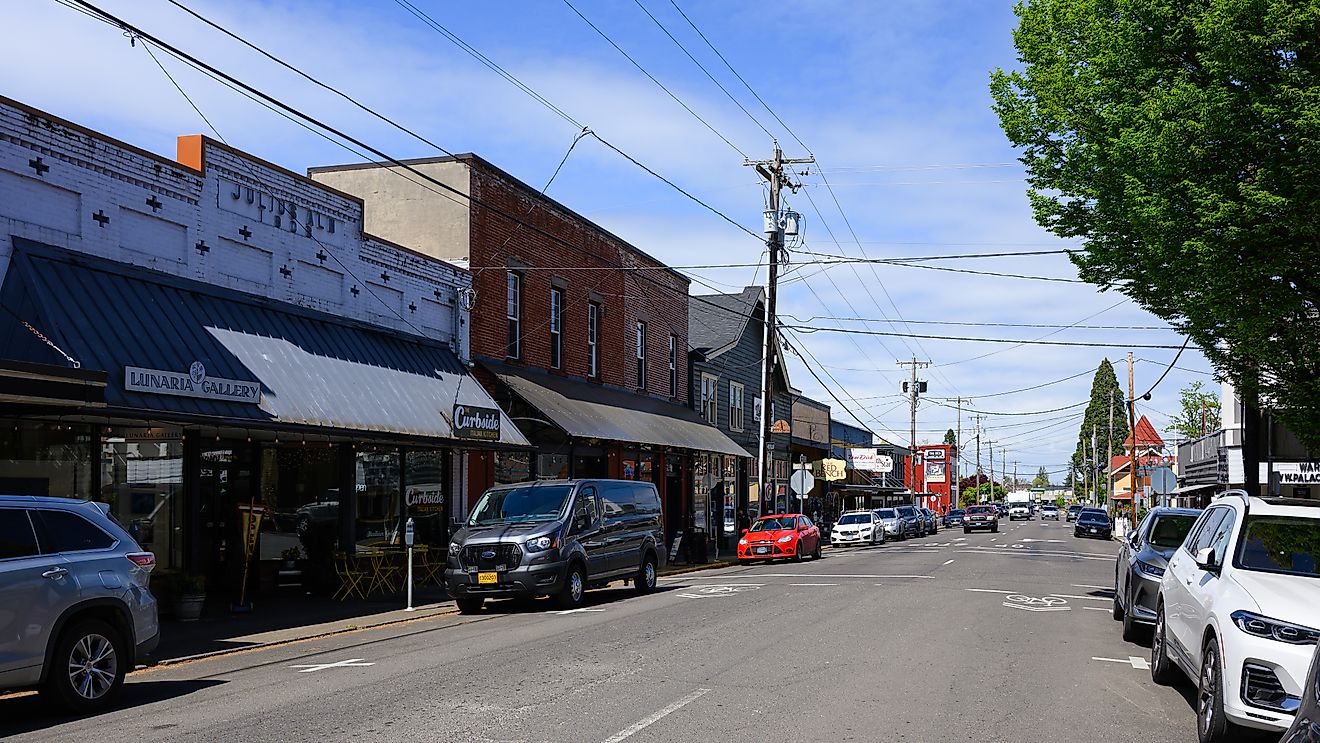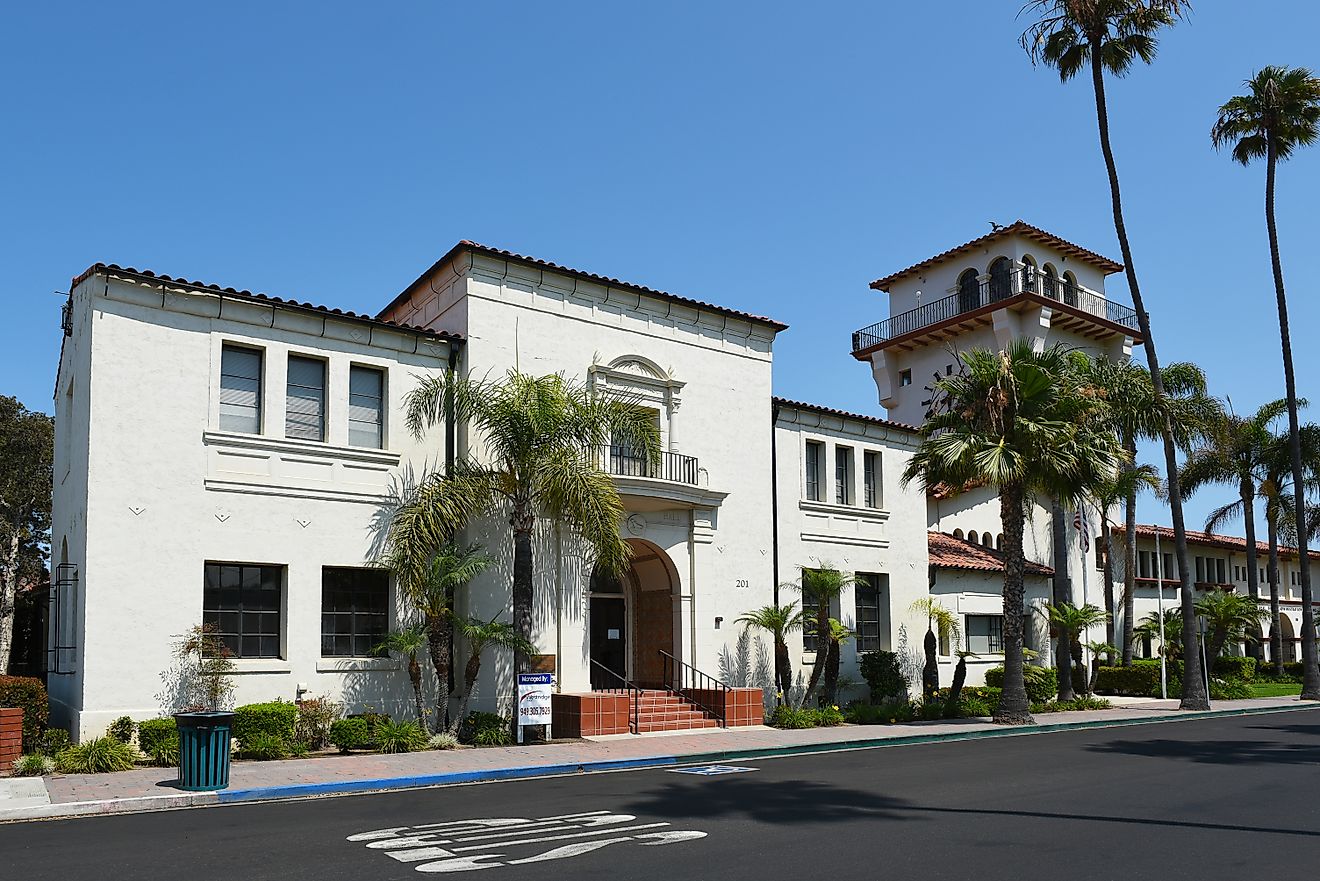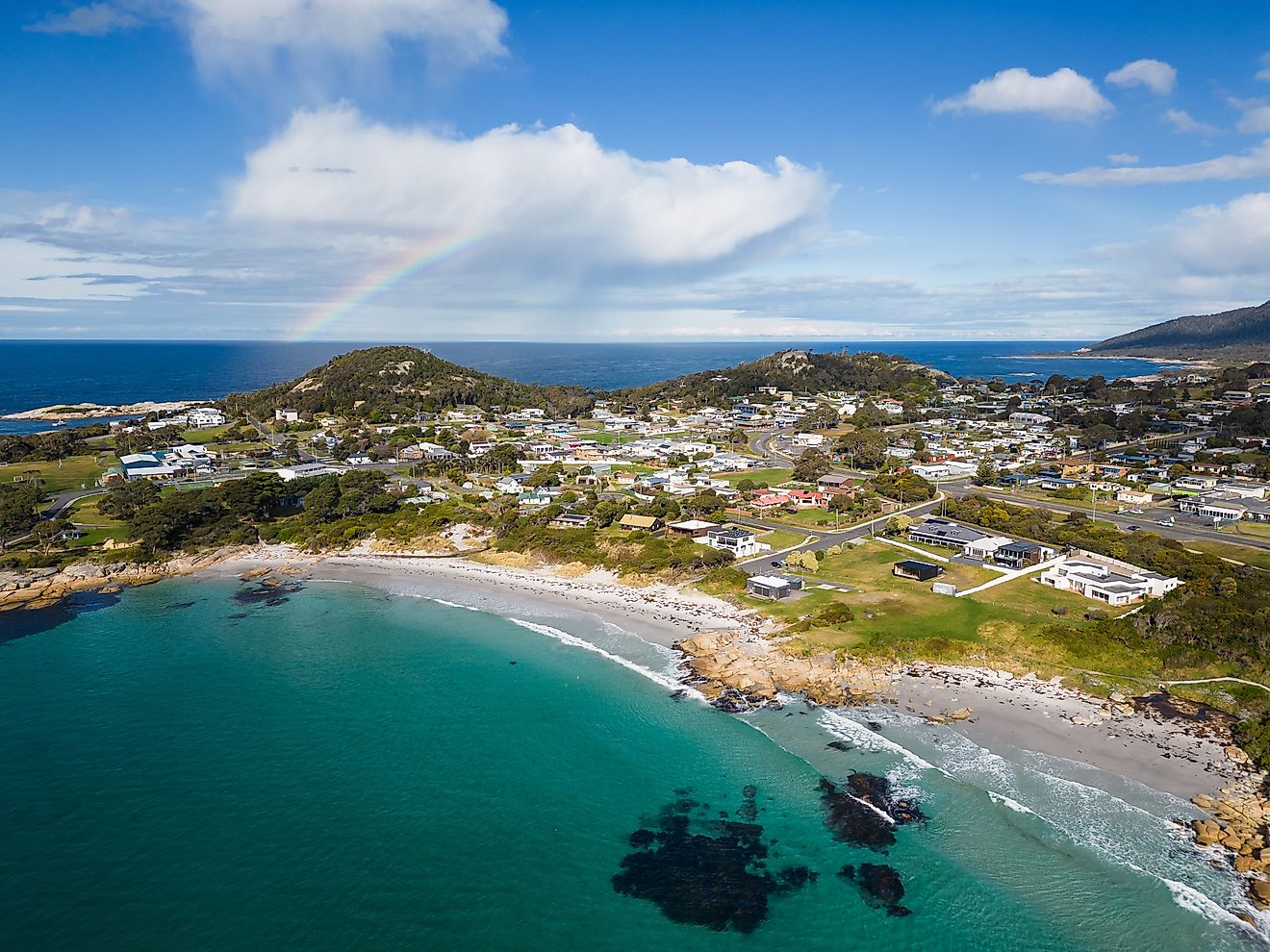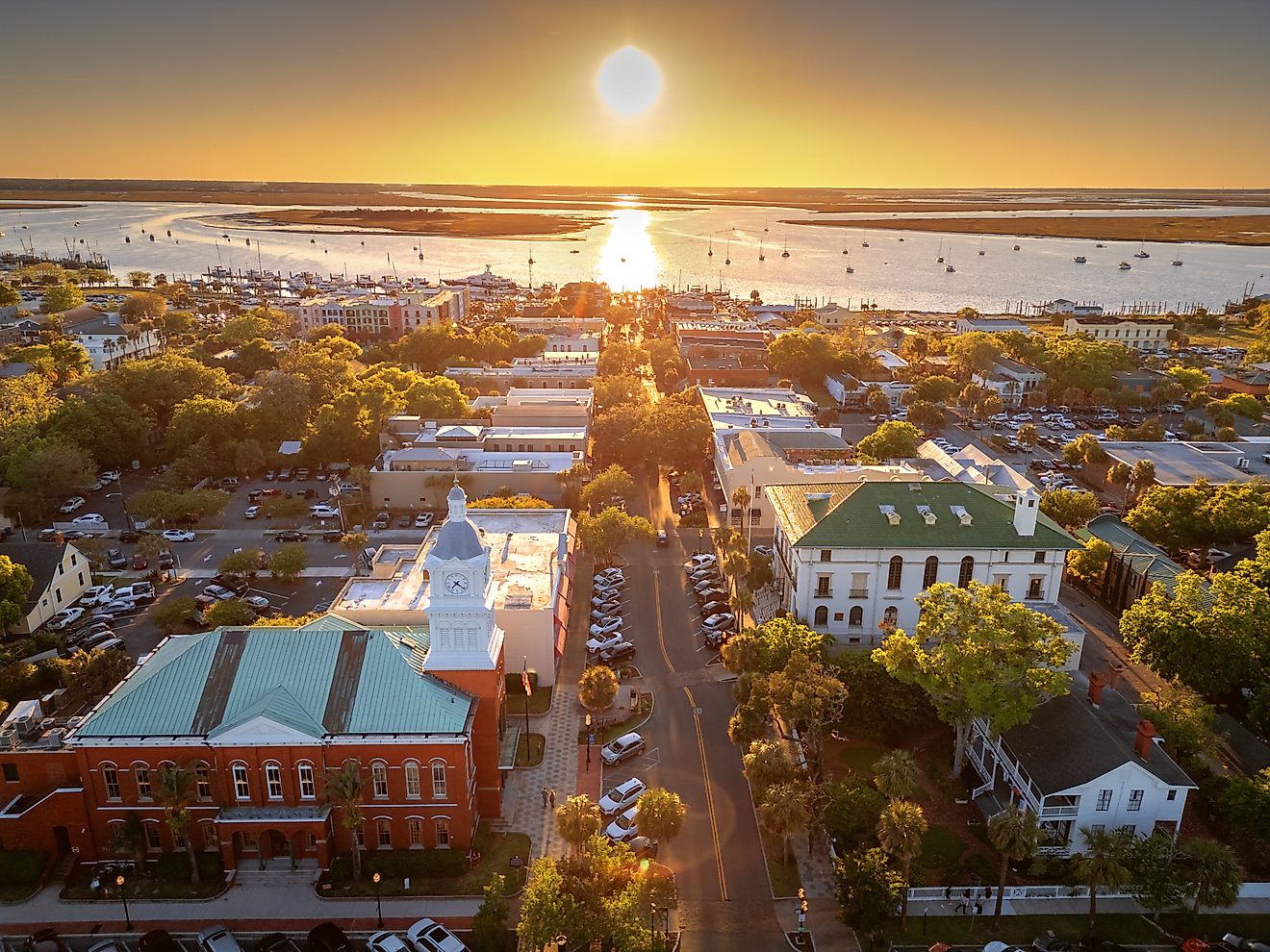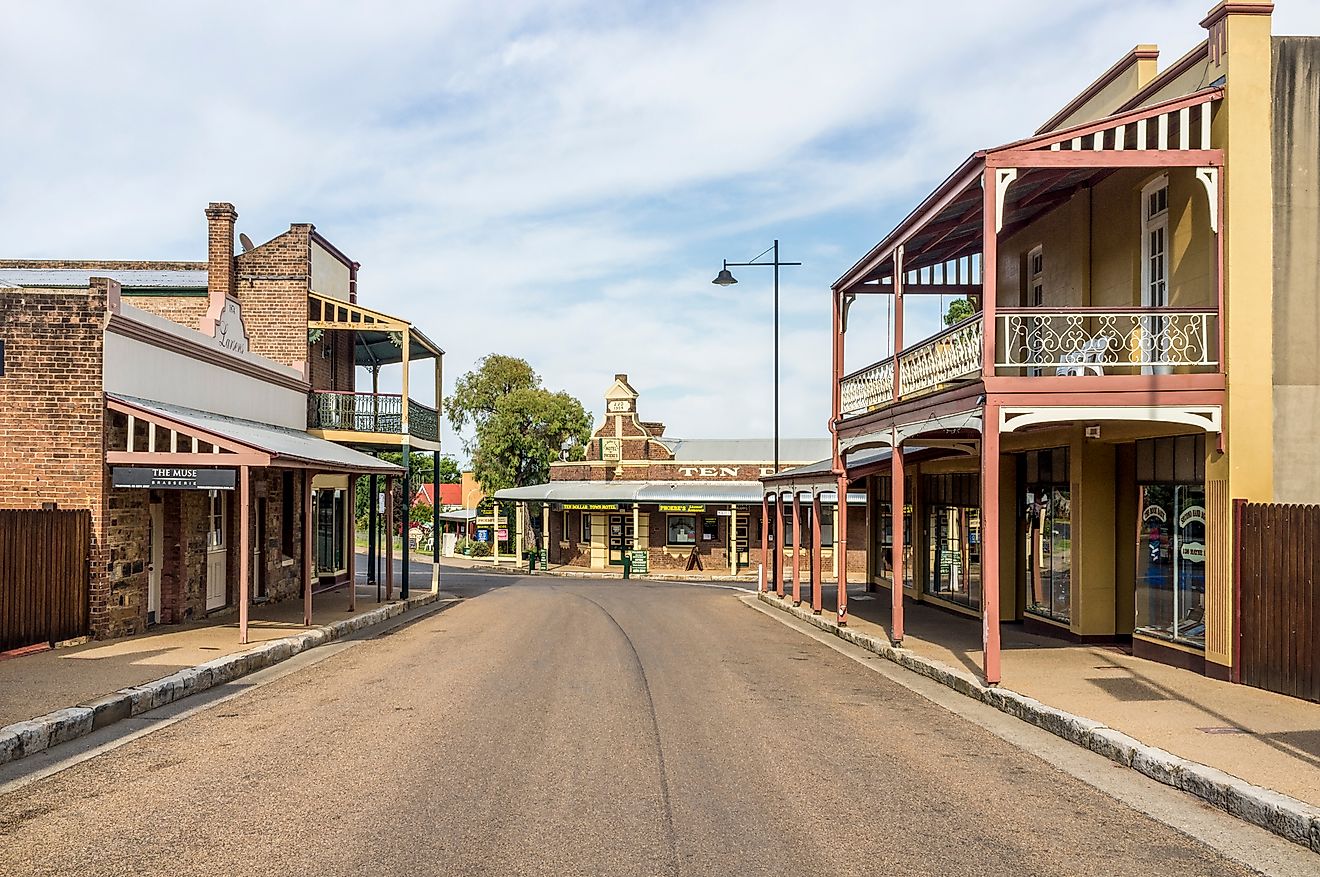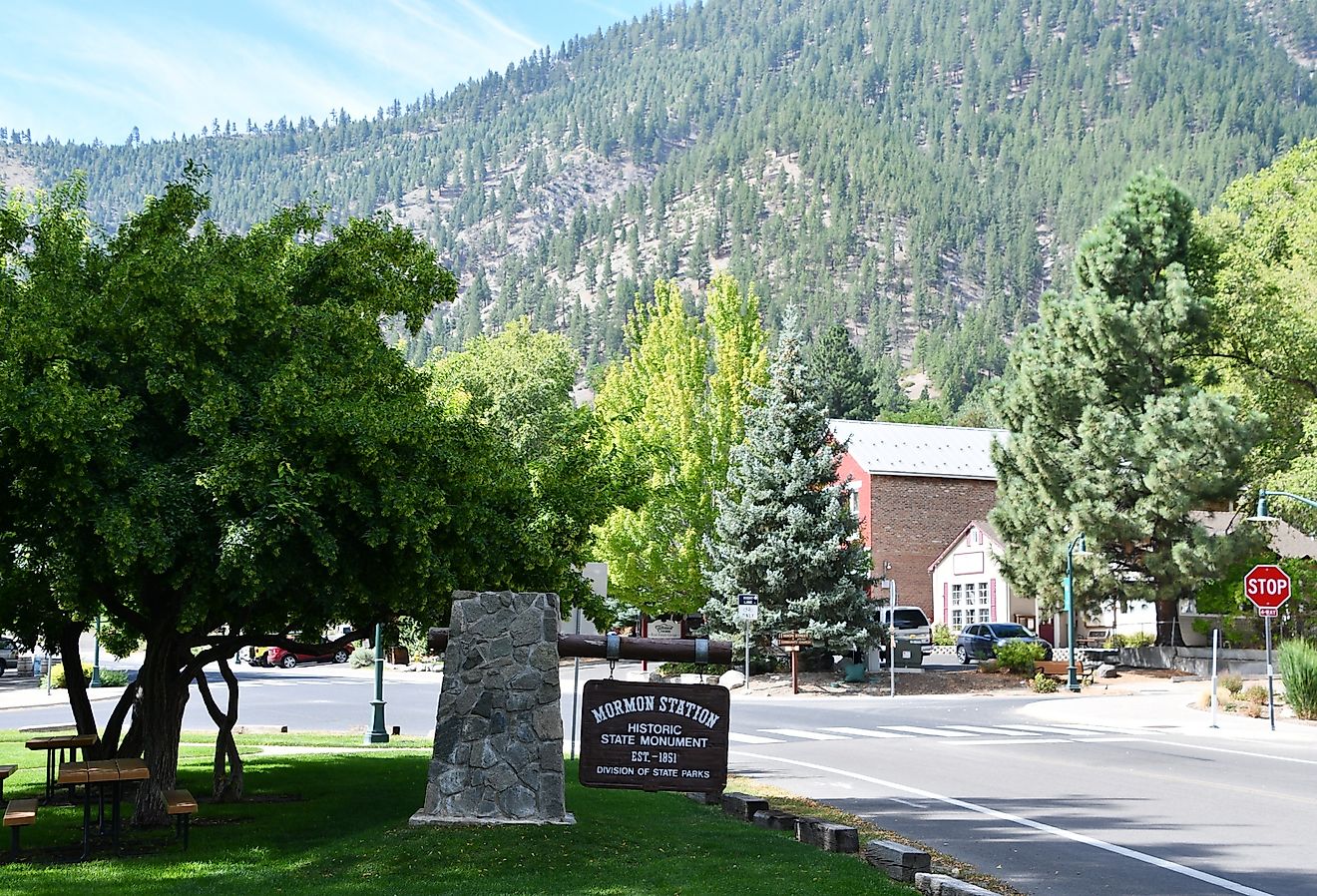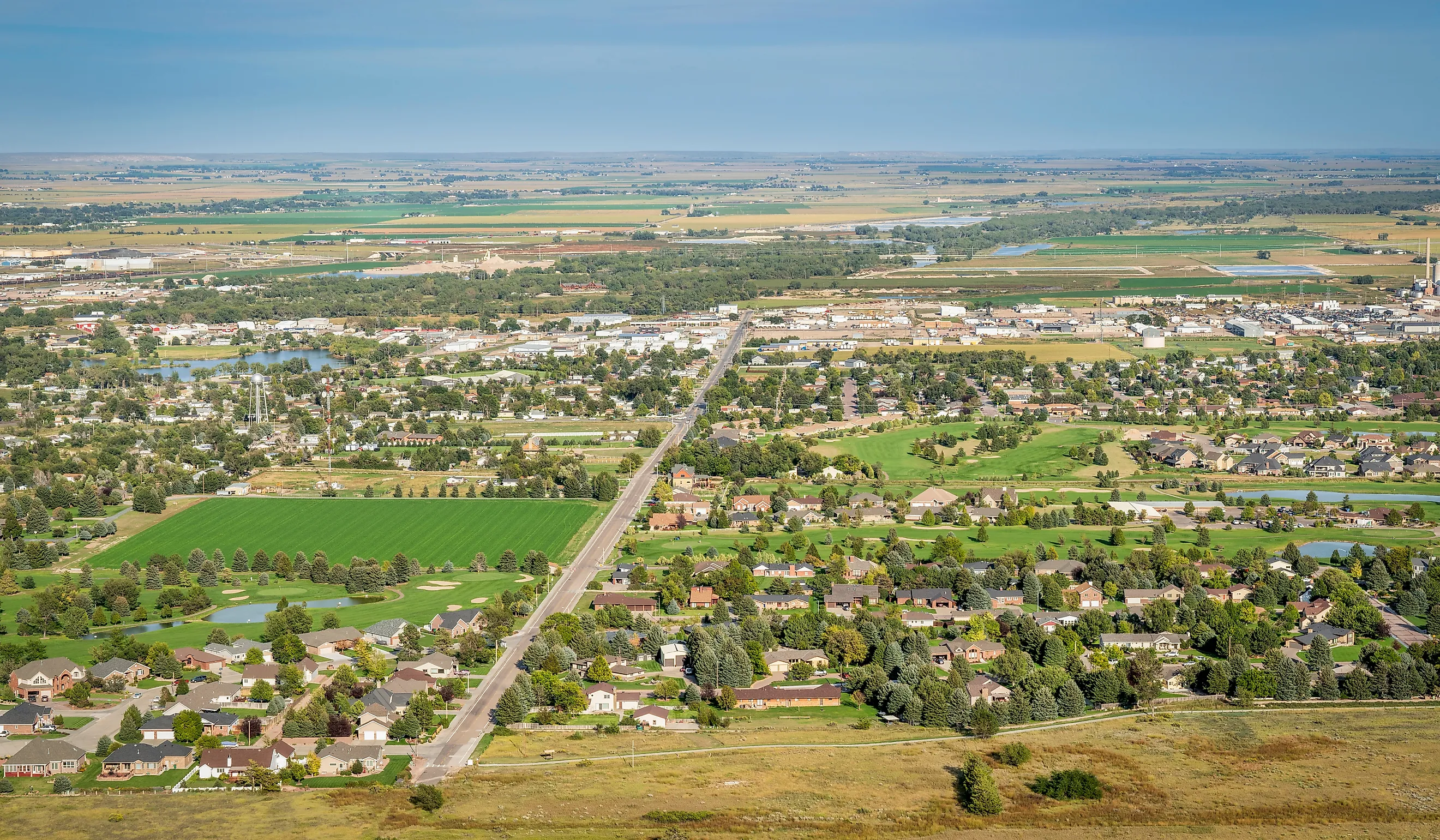
9 Most Welcoming Towns In Nebraska's Countryside
Known as the Cornhusker State, Nebraska is one of the principal agricultural producers of the United States. Historically, the state has been strong in its crop production, primarily focusing on corn, soybeans, wheat, dry beans, and hay. Over time, agricultural production has become increasingly urbanized, resulting in a decline in community involvement. Regardless, agriculture has continued to prosper and has gained Nebraska the nickname of “the breadbasket of America,” becoming known for its farming heritage. Commonly known for other attractions as well, such as Carhenge, a copy of Stonehenge, only in old-fashioned cars. Or Chimney Rock, a cone-shaped rock formation with a geological history to it. Nebraska’s countryside is home to a range of sights to see!
Valentine
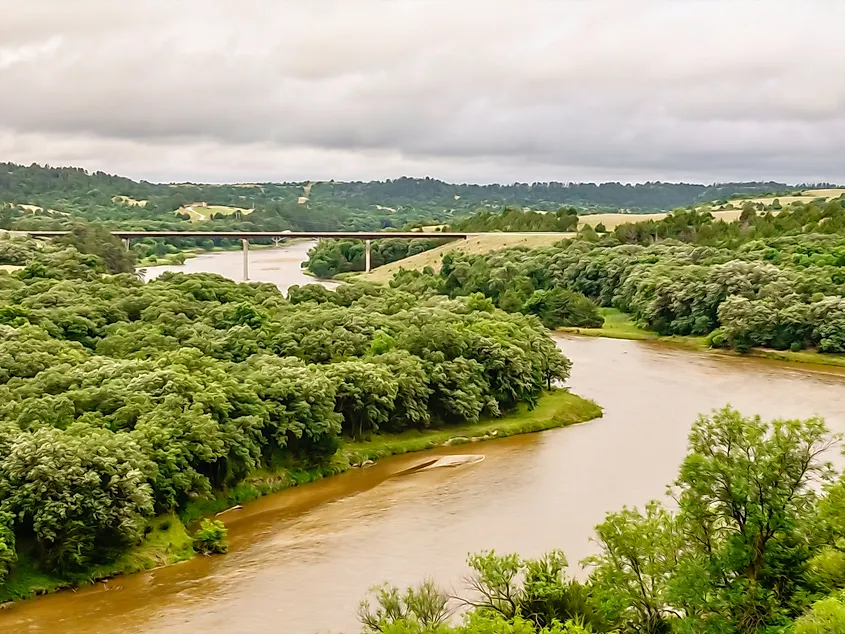
The town’s name, Valentine, gives tourists the impression that it has a romantic history, as it is accordingly nicknamed the Heart City. The name is so popular amongst visitors that the town’s post office receives around 10,000 Valentine’s Day cards every year, and those at the post office resend those cards back with an official stamp or mark from the town, to make everyone’s Valentine’s Day special. Aside from this town’s rosy connotations, it is historical in different ways. Valentine lies in Cherry County, named after Samuel A. Cherry, an officer in the army who was killed in 1881. This county welcomed pioneers from every direction as construction on a new railroad began in the 1880s. In the 1890s, the oldest high school in Valentine was first built, and today, the Centennial Hall Museum is home to a variety of town artifacts. With its ornate architecture, the museum has twelve themed rooms and is said to be the site of paranormal occurrences!
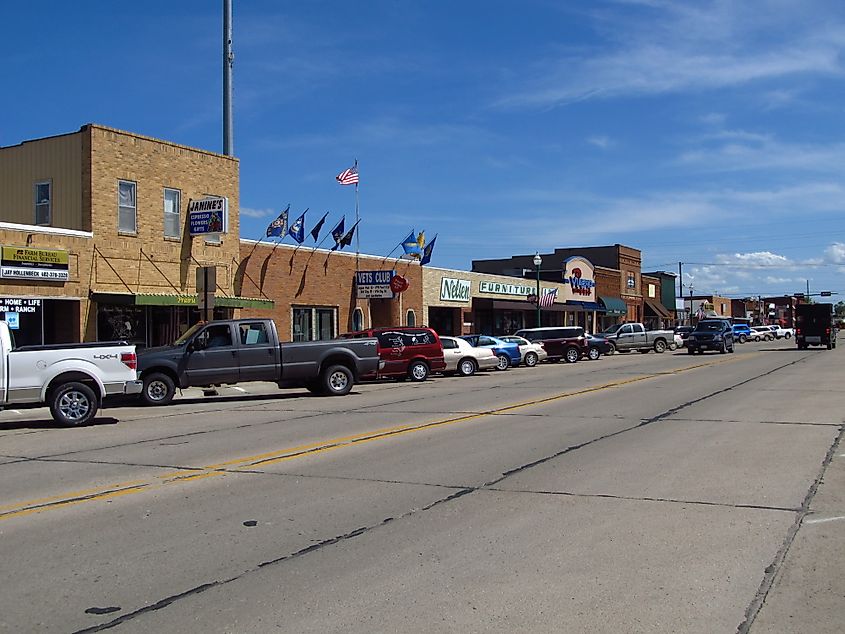
Valentine can also cater to those outdoor lovers, especially with Smith Falls State Park nearby for visitors. With the highest waterfalls in Nebraska, the park is a popular spot for camping, kayaking, canoeing, and more alongside the Niobrara River. The park is home to a range of adventurous activities, and visitors can even discover animal activity as far back as the ice age! Although the best way to indulge in Valentine’s flora and fauna is at the Fort Niobrara National Wildlife Refuge. The refuge holds a range of species, from deer, elk, bison, coyotes, eagles, and more. With a canyon, several waterfalls, and a river, the refuge is a great green space for visitors to explore.
Ogallala
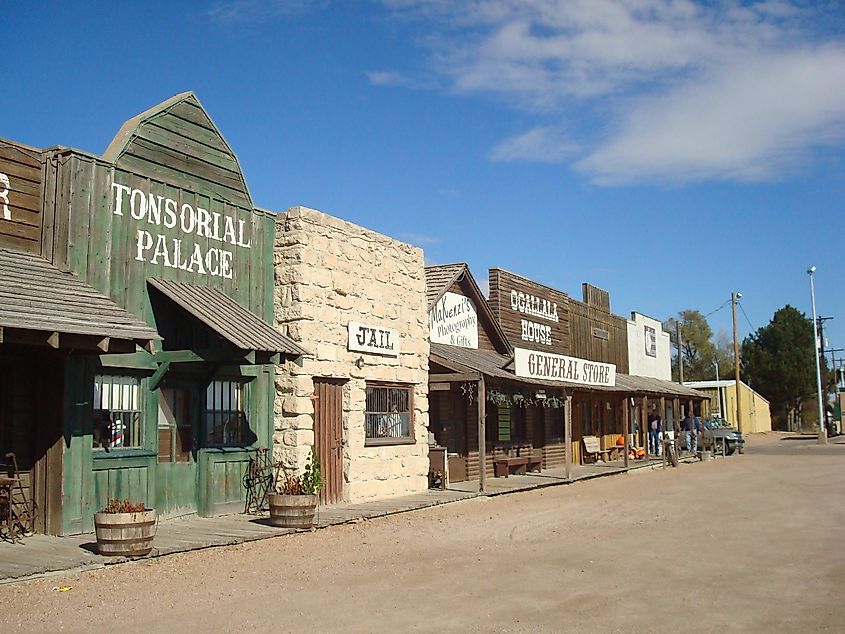
The name of the town, Ogallala, originates from the language of the Sioux Indian tribe, and it translates into the word “scatter” or the saying “to scatter one’s own.” From the 1870s to the mid-1880s, Ogallala was a pit stop for cattlemen and ranchers from other states. Picturing the scene riddled with saloons and railroad tracks, the comings and goings of gamblers, tradespeople, and drifters were common. In the 1880s, farmers and settlers became quite frequent, and after an epidemic had spread through the state, the high-stakes era of cowboys was long over.
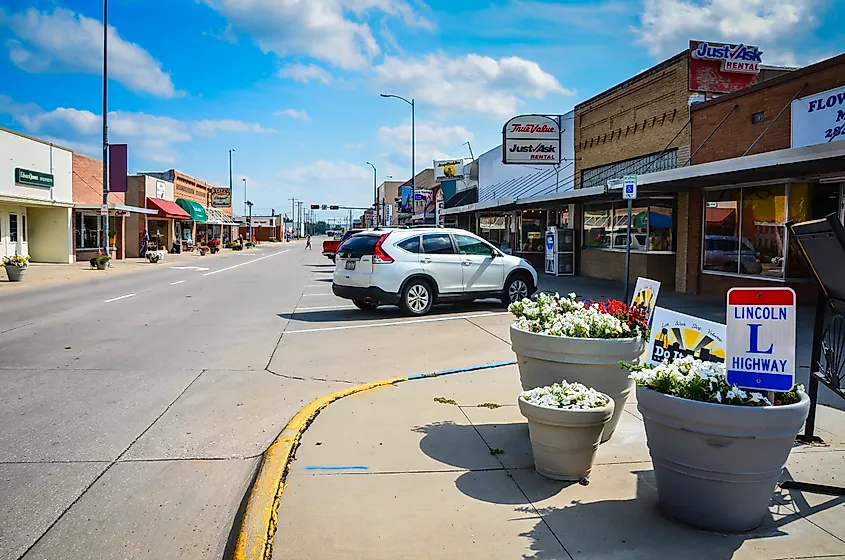
Although the cowboy era is over, visitors can still go back in time to the good ol’ days at the Cowboy Museum. The museum is part of a reimagined 1880s Main Street, where visitors can walk the streets as if having been pulled back in time. Learn the intricacies of this former cow town through the museum's vast artifacts and catch a glimpse into what a day in the life of a cowboy was like. If visitors are interested in more cowboy stories, the Boot Hill Cemetery is a great place to stop by afterwards. As the final resting place for many of the Old West, the cemetery holds stories of gunfights, broken laws, and meddling gamblers and thieves. With corpses placed in sacks, buried in shallow graves, and marked with wooden panels for gravestones, this cemetery is a significant historical element of Ogallala’s cowboy heritage. Need a break from all the cowboy-themed attractions? Well, the Lake McConaughy State Recreation Area is a peaceful spot away from all that. Known as “Big Mac” for its size, the lake is Nebraska’s largest reservoir and a wonderful place for outdoor recreation enthusiasts. The beaches in the area are perfect for swimming, boating, camping, picnicking, and more.
Aurora
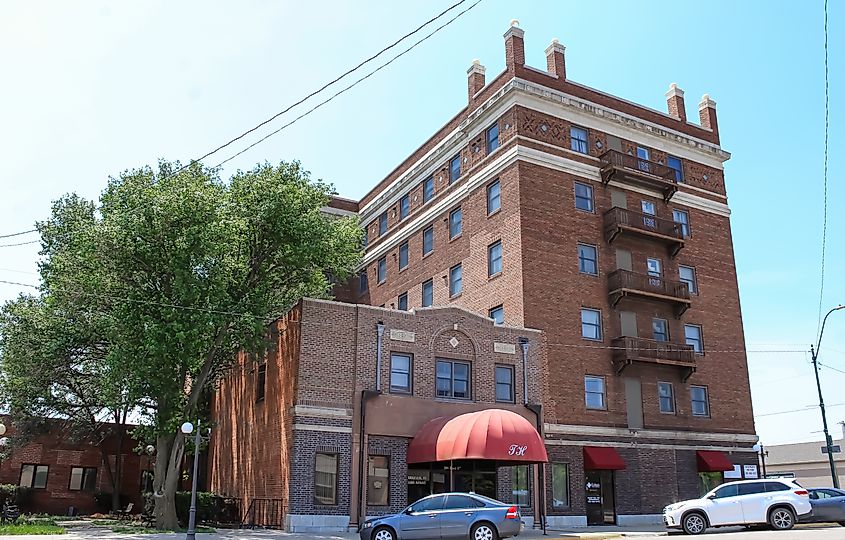
The small town of Aurora was initially just an idea that a couple of men came up with. One of the men, Daniel Stone, named the town after his wife’s native town, Aurora, Illinois. After the town was created, some of the men went on to build Aurora’s first home and first store, followed by a construction home, post office, schoolhouse, and more buildings, establishing Aurora’s presence. This charming town is home to the Lincoln Creek Prairie and Trail, the town’s first trail for hiking. With 16 acres of land, this prairie is a common spot for the town’s community to gather and a very active place for bikers, hikers, and runners. To commemorate the numerous buildings and facilities built in Aurora, the Plainsman Museum was built. With the primary focus being between 1860 and 1950, the museum exhibits include a log cabin, a sod house, a main street broadwalk, a schoolhouse, a Victorian-era home, and much more. Explore antique agricultural equipment, homestead artifacts, and a great pioneer history! If history is not the desired niche, the Edgerton Explorit Center is the perfect place for science fans. A hands-on science center filled with more than 35 exhibits, giving way to an immersive, explorative experience for everyone.
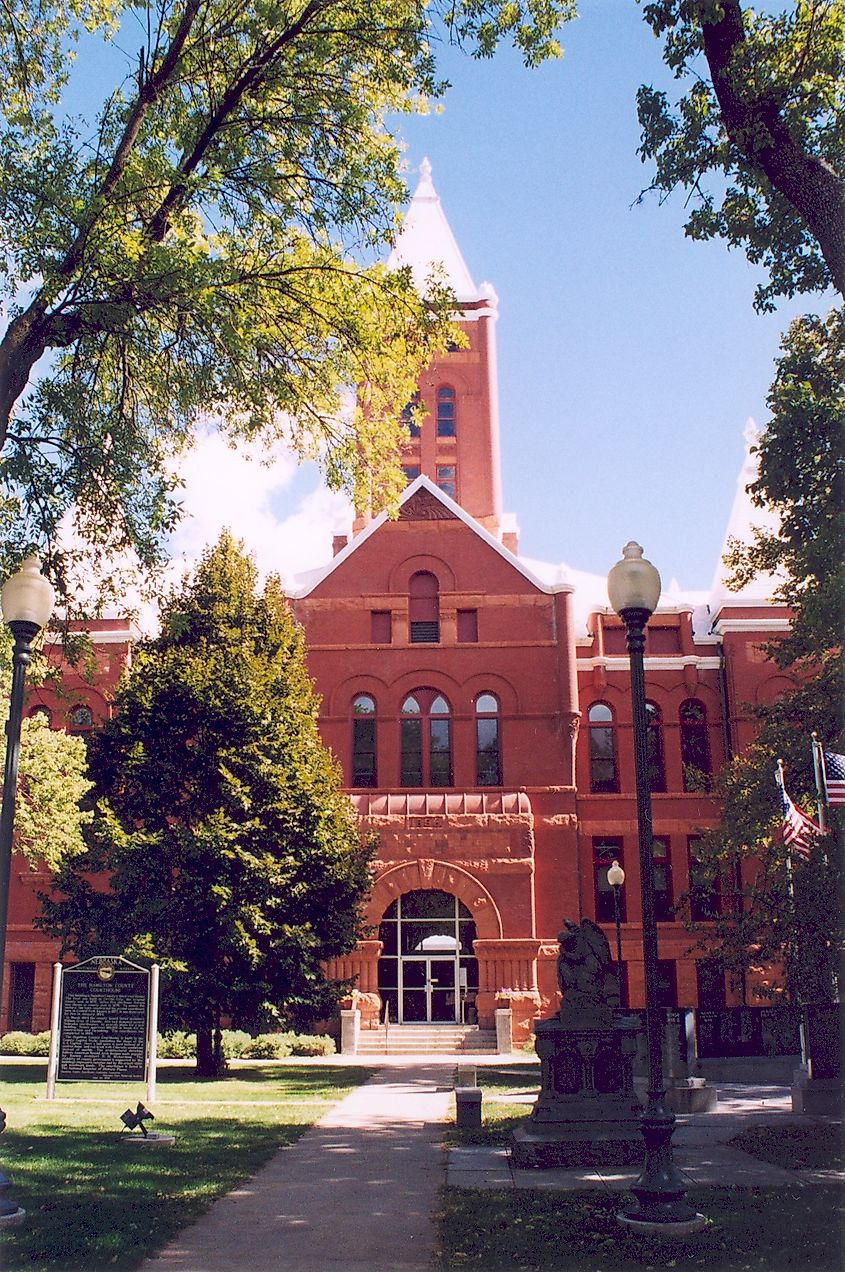
Red Cloud
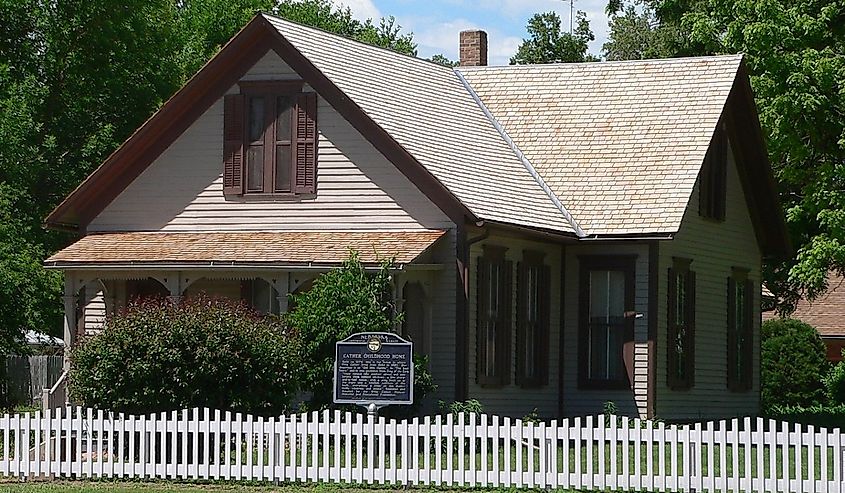
A place where literature and green pastures collide into a quaint countryside. Famous author Willa Cather’s poetic works decorate the town of Red Cloud, with the culture, art, landscapes, and way of life in this small town acting as her inspiration. Today, Red Cloud is a town proudly maintained by agriculture and business. Historically home to homesteaders and pioneers, this small town now balances traditional farming and ranching with modern methods. With that said, exploring both the greenery and literature is made easy for visitors with a stop at the Willa Cather Memorial Prairie. A 612-acre prairie home to a wide number of species of both plants and animals, walking trails, and the perfect place to watch the night skies or the rising sun. Step away from the prairies and take a ride to the Red Cloud Opera House for some action. This opera house is open for much more than live musical and theatre performances, although it is most known for being the childhood hangout spot of Willa Cather and her friends. It is where the author first immersed herself in theatre, where she performed on stage, and gave her high school graduation speech. Jump back in time as Cather herself, just as she and her friends waited for theatrical productions like The Bohemian Girl or The Mikado to release. Finally, if visitors want to truly understand the surroundings in which the author wrote her stories, the Willa Cather Childhood Home is the best spot. Her old home was constructed in 1879, and much of the house is mentioned in her works, such as “Old Mrs. Harris” or “The Best Years.” Restored to its authentic splendor, with some modern touches, her childhood home lets visitors enter the mind of Willa Cather, with its original wallpaper and atmospheric spirit!
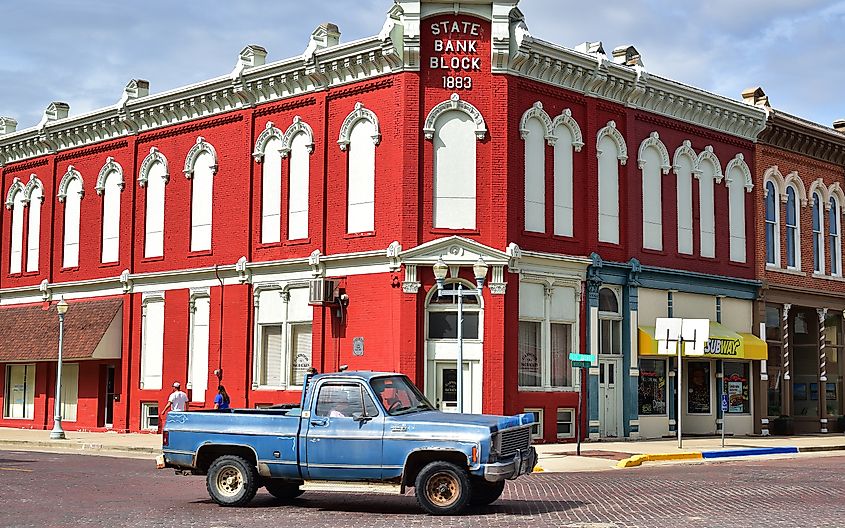
Niobrara
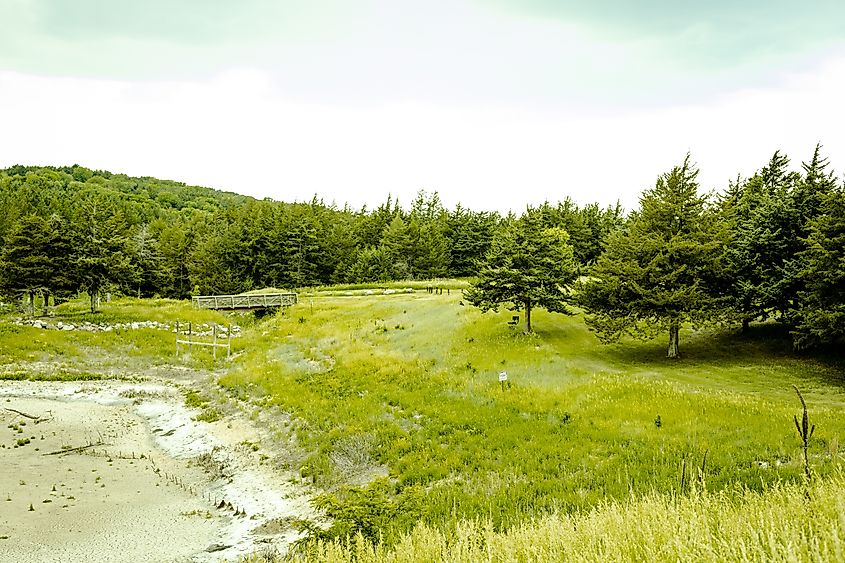
The name of the town, Niobrara, originates from an Indigenous term for “running water.” Originating in 1856, Niobrara has a history of homesteaders, pioneers, and military efforts. With Fort Niobrara, soldiers frequented the town during the Plains Indian Wars, leading to the establishment of settlements, farming, ranching, and industrialization. Niobrara is also well-known for its green spaces, specifically Niobrara State Park. The park holds a variety of activities: camping, hiking, biking, swimming, boating, fishing, horseback riding, picnicking, and a ton more. The park is also home to the J. Alan Cramer Interpretive Center, where visitors can learn about the Ponca Tribe that once resided in the area, and the Buffalo Cookout Pavilion, which is a can’t-miss event where storytellers of the town’s cowboy heritage come in celebration of Memorial Day, July 4th, and Labor Day for a fun cookout. Interested in more of the Ponca Tribe? The Ponca Educational Trail and Earthlodge is a wonderful spot for learning about the inhabitants of Niobrara. Learn past stories at the amphitheatre; view the historical earth lodge, an artifact reminiscent of the tribe; and engage in a chance to connect with tribe members and descendants of the community.
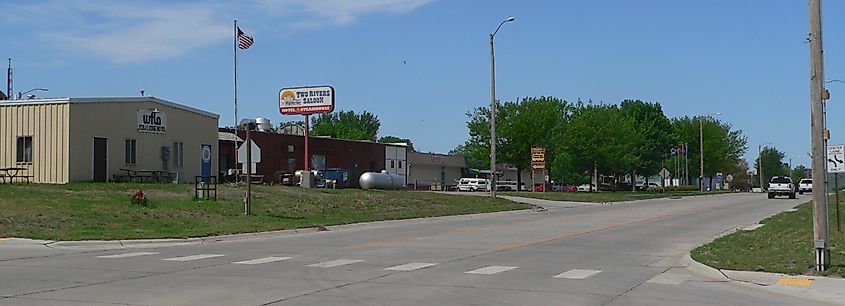
Genoa
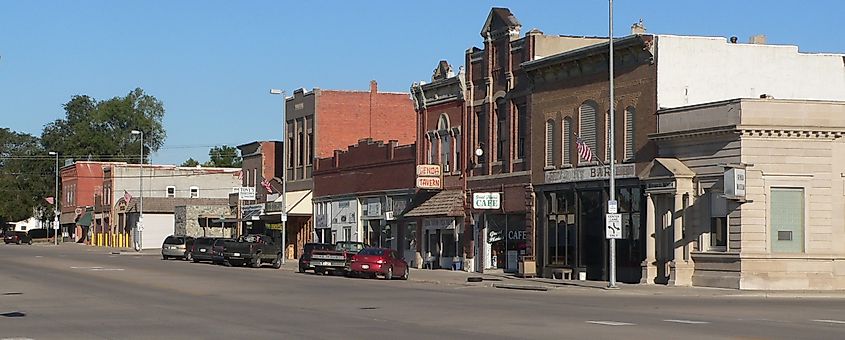
Named by and settled as a Mormon establishment, Genoa began with 100 families, a steam-powered mill, and several rapidly constructed houses for the early settlers. As time flew, the Pawnee people, who were there from long ago, began integrating themselves into the town more notably. Eventually, the Mormons left Genoa as the town had become a part of the Pawnee Native Reservation. By 1876, the lands where the Mormons or the Pawnee peoples resided were no longer available and were put up for sale. For tourists coming in, the Genoa Indian School Interpretive Center was constructed as a remembrance of the town’s education of its Indigenous population. For a little extra context on Genoa’s Indigeneity, the Genoa Historical Museum is a lovely stop on one’s trip. Exhibiting Pawnee artifacts, relics, and tools, the museum highlights the tribe’s history with and without Western influences.
Complete a trip to this small town with a trip to the Loup River Public Power District Wildlife Management Area. A region of outdoor recreation wrapped around the Loup River, this area is a quiet and isolated space where visitors can camp, hike, hunt, bike, fish, and boat to their liking. With two ponds and the river, fishers can find a range of fish to catch, like bluegill, catfish, largemouth bass, and more.
Gering
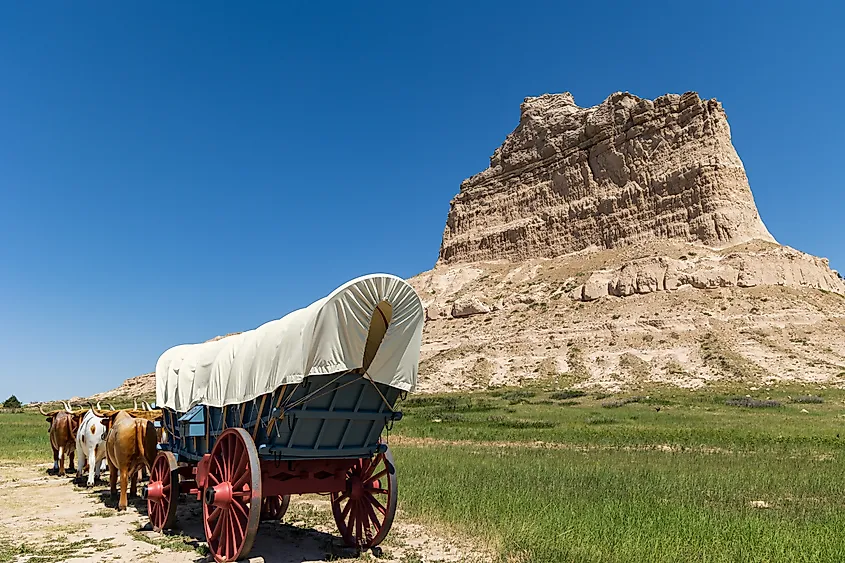
Passed through by pioneers, fur traders, Native Americans, soldiers, and frontiersmen, the town of Gering lay in the wake of popularity. Beginning as a dream, this small town was willed into existence by a man named Oscar Gardner. Settled in 1887 and named after Martin Gering, a merchant during the town’s pioneer times, Gering became a town of pioneer history, archeological discoveries, and Native American stories. Embracing the town’s history, the Legacy of the Plains Museum is a wonderful spot to learn more. Focused on the town’s agricultural period, a range of artifacts such as antique tractors, farming structures, and lessons on irrigation and rural development are on display. After time at the museum, if visitors are looking for some musical entertainment, the Five Rocks Amphitheatre is the best spot in town. For some amplified music, live performances, and a fun time with the family, the amphitheatre is the place to go. Finally, for an escape into the wild, the Buffalo Creek Wildlife Management Area oversees a region of peace in the prairie hills. Accompanied by cliffs and trails, the area is a lovely green space for outdoor recreation lovers.
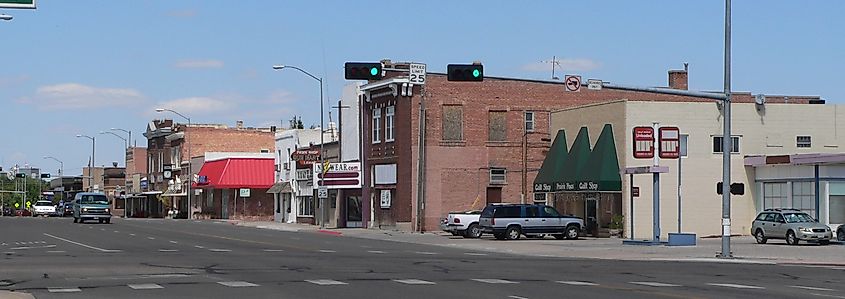
Scottsbluff

Neighboring the town of Gering, Scottsbluff is the largest city within the Nebraska Panhandle. A town that is part of the Great Plains region, Scottsbluff’s primary trade is agriculture, with many crops, including sugar beets, which helped the town receive the nickname of “Sugar Valley.” As a haven of farming, one can expect the town to be home to all kinds of animals and plants. And with that, the Riverside Discovery Center is the best spot to explore these exotic flora and fauna in detail. With 170 species, this 22-acre center is home to the rarest and most endangered plants and animals. From the classic zoo animals to native species, many aspects of this center are focused on education, conservation, and exploration. To discover more of the outdoors, the Scotts Bluff National Monument is perfect. Made up of 3,000 acres of land, visitors have a wide space to explore the historic trails of former pioneers or introduce themselves to the rugged edges and crevices of the badlands. The bluffs in the region can provide some geological and paleontological discoveries for visitors to rediscover. The bluffs also overlook a range of human history, from Native Americans to Mormons to present-day residents. Learning about all this history can be like watching a show, but when it comes to a show, nothing beats the Midwest Theatre. Acting as a hub of the arts, the theatre presents live shows, movies, and events in Scottsbluff. The theatre was originally the site of the Egyptian Theatre, its predecessor, which was demolished due to a fire. After a rebuild, the Midwest Theatre exhibits its Modernistic architecture with floral scrolls and patterns, painting a colourful and thematic design for viewers to enjoy.
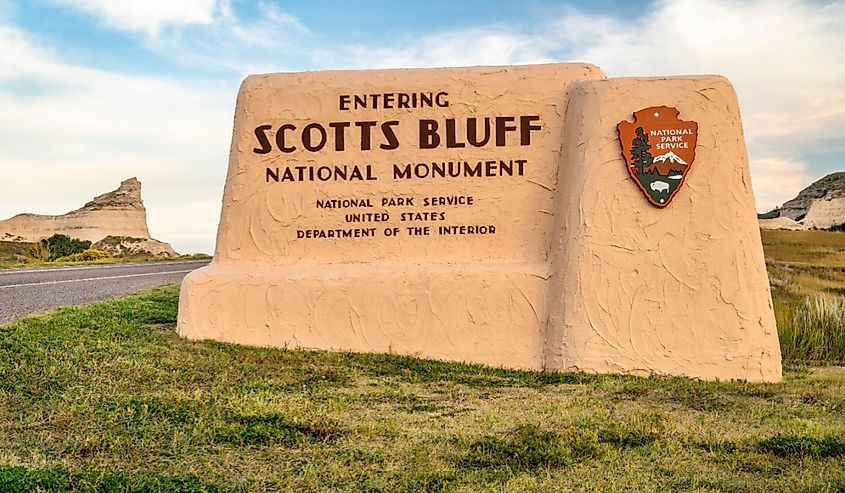
Chadron
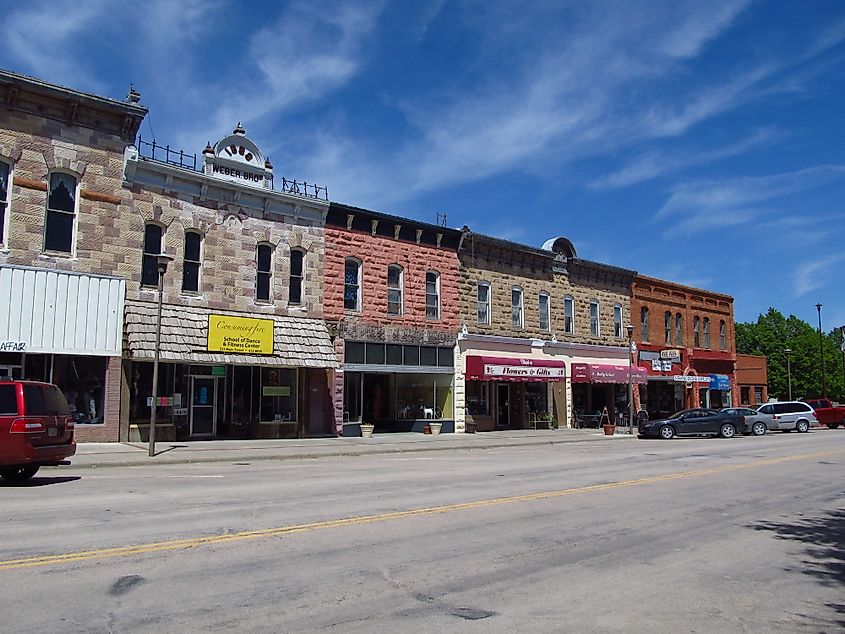
Formerly named O’Linn, after its founder, Fannie O’Linn, the town of Chadron was named after a fur trader by the name of Louis Chartran, which evolved into Chadron. The name Chadron, in the Lakota language, translates to “beaver river city.” The town has a notable inhabitant history, from Native Americans to Europeans, a fur trader nation is what Chadron is significantly known as. Visitors can learn more about this fur trade history at the Museum of the Fur Trade, which explores more of the interactions between the town’s inhabitants and their trades. The museum’s location is where a prominent trading post for the American Fur Company was established in 1837. The museum exhibits firearms, antique artifacts, Native American jewelry, and more. Home to a history of cattle ranching, the Mari Sandoz High Plains Heritage Center holds the stories of Chadron’s farming history. Centered around author Mari Sandoz’s works, the center displays publications on preservation, culture, and history of cattle ranching, farming, and agriculture. Playing into the theme of green spaces, the Nebraska National Forest is a must-see for one’s trip to Chadron. A region of an undisturbed combination of nature and the public, the forest is a great place for visitors to take part in hunting, fossil searching, and hiking.
Nebraska’s countryside has welcomed an extensive range of people passing through: pioneers, homesteaders, cattle ranchers, many indigenous tribes, literature buffs, outdoor recreationalists, farmers, and science enthusiasts. Resulting in this immense human history, people today have learned from their ancestors and forefathers about how they can come together as a community. Embracing their histories, the residents of the Nebraskan countryside are as welcoming as ever.
